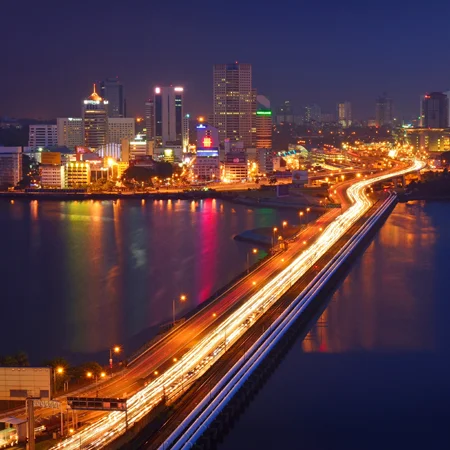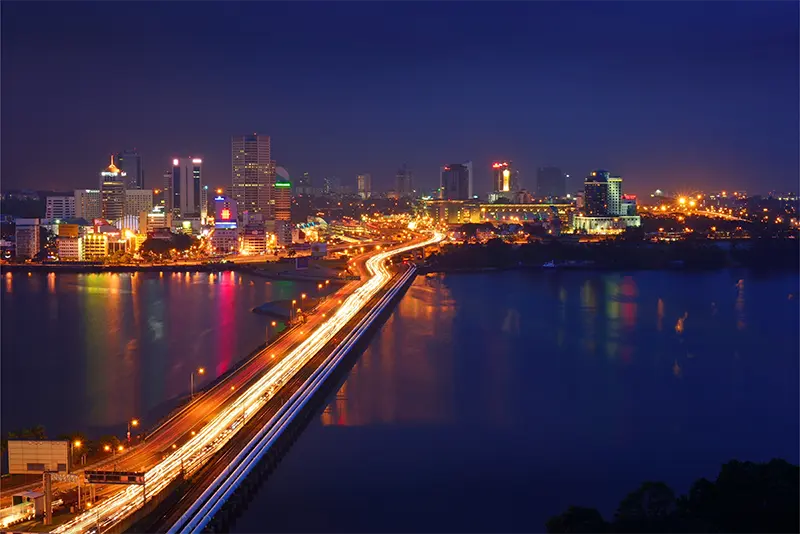Johor-Singapore SEZ: Bridging Tradition and Innovation

Johor-Singapore SEZ: Bridging Tradition and Innovation
A Journey Through Time
In the 1970s, Johor’s landscape was dominated by rubber and oil palm plantations, small villages, and lively markets. Roads leading to Muar, a key border town with Malacca, offered scenic routes showcasing the state’s rich culture and agricultural beauty. Today, Johor has evolved into an economic powerhouse, attracting global investments and fostering innovation.
A Beacon of Progress
Johor’s economic evolution began with large-scale rubber planting in the early 1900s, marking the start of its industrial era. Over the years, it has transitioned from an agricultural state to a thriving economic hub driven by high-value industries and forward-thinking development.
Historical Roots and Strategic Location
Founded in 1528 by Sultan Alauddin Riayat Shah II, Johor has long been a center of progress. Its prime location at the southern tip of the Malay Peninsula, with maritime borders near Singapore and Indonesia, positioned it as a vital trade hub. The Causeway linking Johor Bahru to Singapore has further bolstered its connectivity and economic growth.
Economic Transformation
Johor’s resilience and strategic vision transformed it from a land of swamps into a thriving economic zone. The discovery of tin and iron deposits in the 1920s and its rise as a leading producer of oil palms, coconuts, and pineapples solidified its role in the region’s industrial and agricultural growth.
The Johor-Singapore Special Economic Zone (JS-SEZ)
Johor’s new chapter with the JS-SEZ aims to drive high-value investments and foster innovation. The state’s blend of heritage and modern progress makes it a symbol of prosperity where tradition meets innovation.
Exciting Incentives for Investors
Starting 1 January 2025, the JS-SEZ offers a 5% corporate tax rate for up to 15 years for investments in key sectors like AI, quantum computing, and medical devices. Knowledge workers enjoy a 15% personal tax rate for 10 years. Additional incentives apply in specific flagship areas, and entertainment duties have been lowered to boost the region’s appeal.
Flagship Areas and Sector-Specific Incentives
The JS-SEZ includes several flagship areas, each focusing on different high-growth sectors:
- JB City Centre: Business services, digital economy, health
- Iskandar Puteri: Manufacturing, business services, digital economy, education, health, tourism
- Pelepas-Tg. Bin: Manufacturing, energy, logistics
- Pasir Gudang: Manufacturing, energy, logistics
- Senai-Skudai: Manufacturing, digital economy, education, logistics, tourism
- Sedenak: Manufacturing, business services, digital economy, education, energy, food security, health, logistics, tourism
- Forest City: Financial services
- PIPC (Pengerang Integrated Petroleum Complex): Manufacturing, energy, logistics
- Desaru: Education, food security, health, tourism
Each flagship area offers specific incentives tailored to its focus sectors:
- JB City Centre: Incentives for business services, digital economy, and health sectors, including grants for digital transformation and healthcare innovation.
- Iskandar Puteri: Benefits for manufacturing, business services, digital economy, education, health, and tourism, such as tax breaks for educational institutions and tourism development grants.
- Pelepas-Tg. Bin: Incentives for manufacturing, energy, and logistics, including subsidies for green energy projects and logistics infrastructure development.
- Pasir Gudang: Support for manufacturing, energy, and logistics sectors, with tax incentives for renewable energy initiatives and logistics hub development.
- Senai-Skudai: Benefits for manufacturing, digital economy, education, logistics, and tourism, including grants for tech start-ups and educational infrastructure.
- Sedenak: Incentives for manufacturing, business services, digital economy, education, energy, food security, health, logistics, and tourism, such as subsidies for food security projects and healthcare innovation grants.
- Forest City: Financial services incentives, including tax breaks for financial institutions and fintech start-ups.
- PIPC (Pengerang Integrated Petroleum Complex): Support for manufacturing, energy, and logistics sectors, with incentives for petrochemical projects and logistics infrastructure.
- Desaru: Benefits for education, food security, health, and tourism, including grants for sustainable tourism and educational programmes.
Leveraging the Incentives
Businesses can take advantage of JS-SEZ incentives by:
- Focusing on High-Growth Sectors to qualify for the tax benefits.
- Choosing Strategic Flagship Areas for tailored incentives.
- Hiring Knowledge Workers to enjoy additional tax perks.
- Engaging with Government Support via the Invest Malaysia Facilitation Centre Johor for streamlined approvals.
Comparative Advantage
The JS-SEZ stands out with its 15-year tax period and sector-focused perks, outperforming Singapore’s 17% rate and Thailand’s 8-year exemptions.
Broader Development Goals
This initiative supports Malaysia’s 2025 investment framework for equitable growth and simplifies the investment process with enhanced support centers.
Potential Challenges
Key factors to consider:
- Regulatory Shifts: Policies may change over time.
- Infrastructure Readiness: Timely project completions are crucial.
- Market Risks: Global economic downturns may affect investments.
- Competition: Other regions may offer rival incentives.
Seize the Opportunity
The JS-SEZ represents a transformative opportunity for growth. Our team is ready to provide insights and guide you in unlocking Johor’s potential—a place where innovation and tradition create a prosperous future.


